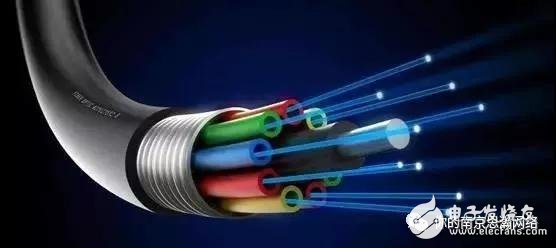With the increasing requirements of communication transmission, optical fiber has become the first choice for people in communication laying with its advantages of fast transmission speed, long distance, safety and stability, anti-interference and convenient expansion. We often see the need for long-distance data transmission in building intelligent projects, basically using fiber-optic transmission. However, some users have discovered that the difference between the single-mode fiber and the multi-mode fiber is the difference between the two. What is the difference between the two, and this article will make a simple answer here.

First of all, regardless of single-mode fiber or multi-mode fiber, it is for high-quality transmission of data at a long distance. The difference is that the mode of transmission of light is different. Light travels along a straight line in a single-mode fiber, and does not reflect. Therefore, its propagation distance is very far. Multimode fiber can carry the transmission of multiple optical signals.

Single-mode fiber is the only fiber (two in most applications) glass fiber with a core diameter of 8.3μm~10μm and only one transmission mode. The bandwidth of a single-mode fiber is higher than that of a multimode fiber, but it has high requirements on the spectral width and stability of the light source, that is, the spectral width is narrow and the stability is good. The transmission rate of single-mode fiber is higher than that of multimode fiber, and the transmission distance is also 50 times higher than that of multimode fiber. Therefore, the price is higher than that of multimode fiber.
Single-mode fibers have much smaller core diameters than multimode fibers. The small core diameter and single-mode transmission characteristics make optical signals transmitted in single-mode fibers not distorted by overlapping optical pulses. Among all fiber types, single-mode fiber has the lowest signal attenuation rate and the highest transmission speed.

Multimode fiber is another common type of fiber with a core diameter of 50μm to 100μm that can transmit multiple modes at a given operating wavelength. Compared to twisted pair, multimode fiber can support longer transmission distances. In 10mbps and 100mbps Ethernet, multimode fiber can support a transmission distance of up to 2000 meters. Common multimode fibers have core diameters of 50 μm, 62.5 μm, and 100 μm.
Since there are hundreds of modes transmitted in multimode fiber, the propagation constant and group rate of each mode are different, which makes the fiber narrow in bandwidth, large in dispersion, and large in loss. It is only suitable for medium and short distance and small capacity optical fiber communication systems. .
In the actual application process, the general transmission distance is far, then the single-mode fiber is used. If the distance is close, the multi-mode fiber is used, and the transceiver price of the single-mode fiber is higher than that of the multi-mode fiber transceiver.
One of the main ways to distinguish between different fibers is to look at the core diameter and the diameter of the cladding, and industry standards have also been established in the industry. These industry standards have played a role in the selection of fiber optic splice connectors and splices and splice tools. Important role.

Welded Stainless Steel Pipe,Disposable Welded Stainless Steel Pipe For Laboratory,Medical Welded Stainless Steel Pipe,High Precision Welded Stainless Steel Pipe
ShenZhen Haofa Metal Precision Parts Technology Co., Ltd. , https://www.haofametals.com